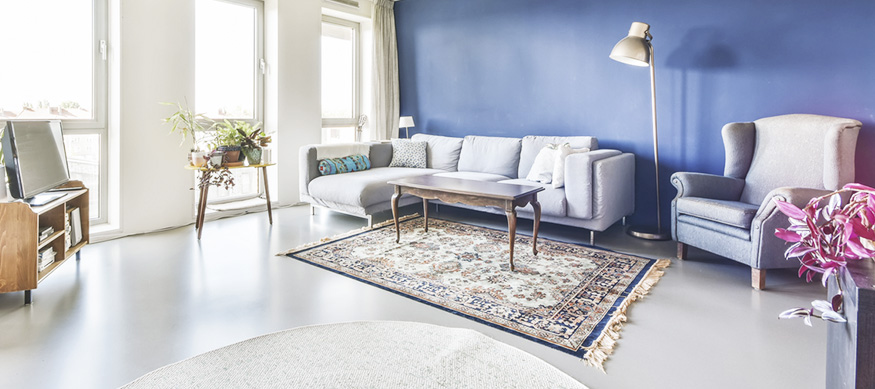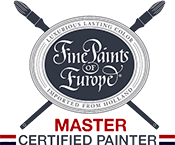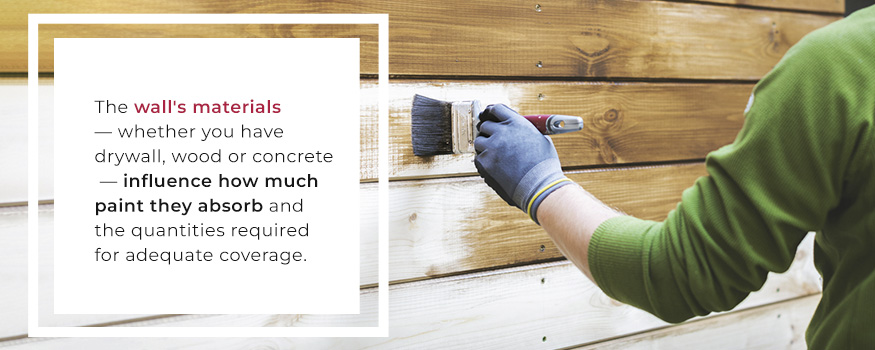How Much Paint Do You Need for Interior Painting?
November 19, 2024

When assessing a home painting project, one of the most essential factors is how much paint you need to adequately cover your space. Having too much or too little on hand can be inconvenient, so understanding how to calculate your needs is the key to a smooth overall process.
A few tips and considerations can make determining the right amount of paint for your interior project easier. Relying on professionals like the painters at Shoreline Painting makes the home renovation process effortless.
The Importance of Having the Right Amount of Paint
Carefully assessing how much paint your interior project requires can save you from future frustration and make life easier. Explore the following reasons why accurate paint estimation is necessary:
- Costs: You can manage your project budget more effectively by correctly estimating your paint needs, avoiding overspending on excess or accidentally underestimating your project’s expenses.
- Color consistency: Using paint from the same batch can help ensure the color is consistent across your space without noticeable hue differences. One of the downsides of painting your home without a professional is working with potentially lower-quality paint than what an expert provides. If you have to get paint from another batch because you ran out, the colors may vary slightly.
- Quality: Having the right amount of paint helps you coat every surface adequately, reducing the chances of streaks, brush marks or missed sections. You can ensure full coverage for a more polished finish.
- Project efficiency: Anyone who has run out of paint mid-project knows how frustrating it is to pause what you’re doing for a trip to the paint store. Not getting enough the first time can interrupt your workflow and make your project take longer than you originally accounted for.
- Waste and storage requirements: Overestimating your paint demands leads to unnecessary waste, especially if you don’t plan on painting anything else in that color. Finding storage can also be a headache. Old paint cans take up precious space in your home or garage. They need a dry, temperature-controlled environment — you cannot store paint outside.
Key Factors to Determine How Much Interior Paint Is Needed
So, how much interior paint do you need? The exact amount will depend on a few essential factors. Learn more about each consideration and how to properly estimate your paint quantity needs.
Room Size
Begin by measuring the square footage of the walls you plan to paint. Recording your measurements on a piece of paper will help you stay organized and ensure you account for every section.
Here’s how to get the square footage of the walls in your room:
- Measure the length and height of each wall in feet.
- Multiply the length by the height to determine the area of each wall.
- Add the area of each wall together to get the room’s overall size.
- Measure the height and length of any openings, including doors and windows.
- Multiply the length by the height to determine the area of each opening.
- Add the areas of all openings together.
- Subtract the total area of the openings from the overall wall area to get the paintable surface area.
If you are painting the ceiling, you’ll need to measure its length and width, multiply those numbers and add that figure to your room’s overall square footage.
Working with a painting expert from Shoreline Painting is best for pristine results — especially for rooms with irregular configurations, fixtures and openings that complicate the measuring process.
Paint Type
Different paint types vary in coverage rate, so you’ll want to check the paint’s label. Manufacturers often include information regarding average coverage. For example, a gallon container may indicate that it covers approximately 350 square feet.
Your paint’s finish, such as semi-gloss, satin or flat, will impact coverage. Paint composition can also affect how much you need. Oil-based or specialty options, for instance, may require more layers than latex paints. Sheer paints also likely need multiple coats for consistency across each wall.
Wall Texture and Surface Type
Your wall’s surface is an important consideration. Textured and porous walls tend to require more paint than smooth ones. The wall’s materials — whether you have drywall, wood or concrete — influence how much paint they absorb and the quantities required for adequate coverage.
Application
Your application process will impact paint demands. For example, rollers and sprayers tend to apply thicker coats than brushes.
Your space will likely require paint primer, too. Primers help achieve better adhesion and coverage if you’re painting over a darker color with a lighter one, covering stains, changing the paint’s sheen or tackling an unfinished surface.
Additional Tips for Getting the Right Amount of Paint
A few additional suggestions can help you take on any interior painting project. Explore some expert tips below.
Use a Room Paint Estimator Tool
You can find helpful room paint estimator tools online that perform the square-footage calculations for you. Most of them require the height and width measurements for your walls. You simply plug the numbers into the tool, which will estimate how many gallons of paint your project requires.
Plan for Future Touch-Ups
When you invest in paint, always account for the need for future touch-ups. A scratch or stain from daily wear may require a few strokes of paint to cover. Having a little extra in storage can make these fixes simple. Interior paint can last anywhere from a couple of years to over a decade, depending on the type.
Remember to keep paint in a humidity-free space without extreme temperatures. Do not set it in direct sunlight, and ensure the container is upright and out of reach from kids or pets. Check it periodically for signs of expiration, and dispose of it responsibly according to local regulations — most times, you’ll need to let the paint solidify before tossing it.
Work With the Professionals at Shoreline Painting
The easiest and most efficient way to get excellent results is to rely on the Fine Paints of Europe Master Certified Painters at Shoreline Painting. They know how to estimate a paint job with the greatest precision. You can enjoy peace of mind knowing your home will look exactly how you envisioned it with our elite services.
Why Choose Shoreline Painting for Your Interior Painting Needs?
When you need premium interior painting services, turn to the experts at Shoreline Painting. We serve homeowners in Fairfield County, Connecticut, and Westchester County, New York. We are a family-owned and operated business with over 35 years of experience transforming and elevating homes like yours.
We offer luxurious, high-end paint options and Master Certified residential painters to ensure you get the results you’re dreaming of for your space. Our expert color consultants can help you determine the right color scheme to complement your home and design style.
Are you ready to start your next interior paint project? Contact us to book a consultation today.
Recent Posts & Guides










